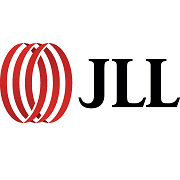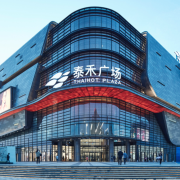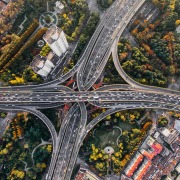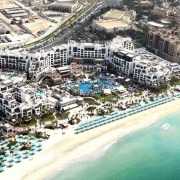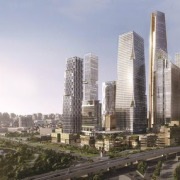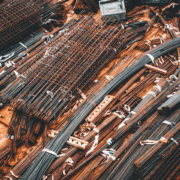The rise of the Vertical Village
As Asian cities expand vertically, we examine what’s behind the thirst for bigger, better, taller and uncover the latest tall building trends
For almost 40 years, the USA’s Empire State Building reigned supreme as the world’s tallest tower, soaring 381 metres above the New York skyline. Today, it’s dwarfed as we enter the era of the ‘supertall’ and ‘megatall’ – buildings exceeding 300 and 600 metres respectively.
“Cities used to be measured by the number of high rise buildings over 12 stories, but that’s not tall anymore,” said Albert Ovidi, COO and Head of PAM (Property and Asset Management), JLL, Asia Pacific.
“Tall buildings become symbols of cities and countries. The Empire State was iconic, people travelled to see it but, today, it’s the Burj Khalifa in Dubai. (828-metres)”

Taipei101. (Image Credit: Jones Lang LaSalle)
The Middle East and Asia now dominate the skyscraper index and, in China alone, there are more than 67 tall (300m+) buildings under construction – the most in the world. But this is a relatively recent phenomenon; two thirds of the world’s supertall buildings are less than 10 years old and there are over 100 more now under construction. Until recently rapid advances in building height were restricted by a seemingly obvious limitation: vertical travel.
“The advent of the electric elevator allowed us to build over five stories,” says Graham Coutts, Head of Strategic Consulting, Asia Pacific, JLL. “Essentially, improved lift technology allowed us to go bigger and bigger.”
He says the skyscraper boom is, in part, being propelled by competition between cities as they attempt to put themselves on the map.
“There’s a certain amount of hubris in all of this but really it goes back to land value: tall buildings are high-density developments so it’s an opportunity to use expensive land most efficiently.”
Vertical villages
For investors, today’s towers present a new economic proposition.
“As buildings get bigger they’re turning into ‘vertical villages’ – most of today’s supertall buildings are mixed use, they’re hotels, offices, residential and retail,” says Coutts, who has consulted on tall building projects worldwide.
“One thing we have seen over the last few years is a move away from the sort of tall buildings that are owned principally by institutional investors and intended solely for use as offices – Taipei 101 and Petronas Towers, for example.” 10 years ago nine of the world’s top ten tallest buildings were used exclusively as offices. However, the last decade has seen a significant shift with eight of the top ten tallest buildings completed in the past 10 years now combine offices, apartments and hotels. This trend shows no signs of letting up with almost every tall building under construction today planned with mixed use in mind.
“Financing such large projects has always been a challenge but the move to mixed use allows the risks to be spread, often among many owners,” Coutts added. Many super tall buildings now include large numbers of residential apartments, which can be sold ‘off plan’ before ground is even broken.”
While mega structures may not come cheap, they tend to add value to surrounding areas. The Burj Khalifa, for example, inspired the entire Downtown Dubai area where residential units boast unparalleled views of the world’s tallest building – quite a selling point.
Managing a showpiece
Despite the obvious ‘wow’ factor, supertall and megatall structures come with a unique set of challenges. Crowd control, for example. The Burj Khalifa has a capacity for 35,000 people at any one time – that’s the estimated population of Lichtenstein.
“Building managers need experience with this style of crowd control. They’re no longer managing a local soccer tournament, they’re dealing with the World Cup,” says Ovidi.
“If you go to a regular high rise building and have a bad experience, chances are it’s not going to make headlines and you’ll go back. But with megatall, it’s different. It’s a showpiece and people are attracted to these showpieces,” he adds.
Safety is another major concern in a post-9/11 world and evacuation, vertical travel and the movement of the building at height pose challenges, says Coutts. Window cleaning is another major cost. It takes 36 workers more than three months to polish the glass of the Burj Khalifa.
Despite the constraints, in 2018, the Kingdom Tower in Jeddah will break the one-kilometre building barrier, pushing the boundaries of engineering. While Coutts agrees there’s architectural appetite, there’s cause to question the social appeal of ‘megatall’.
“Is the view from 1,000m any better than from 300m? You have these vertical villages and you have to wonder whether anyone will come down to the ground anymore?”
Pushing boundaries
As the name suggests, the Sky City development in China’s Changsa , the capital of the central Hunan province, is just that: a city in the sky, housing schools, hospitals, shops, homes and even parks and gardens.
The project, if completed as originally planned, will surpass the Burj Khalifa by 10 metres – it could also claim the ‘fastest build’ title with the developer proposing to use pioneering pre-fabrication building techniques which could revolutionise the construction industry.
For a lesser-known Chinese city, this project certainly grabbed headlines. It could also signal a paradigm shift in the turnaround time of tall buildings, with other developers following suit, if the super-fast skyscraper model proves successful.
Looking up and ahead
To both those within and outside the real estate industry across the world, the increasing speed of construction and evolving composition of buildings will have wide-reaching impacts. How far this can develop as today’s technology continues to evolve is yet to be seen, but we’re already in the midst of huge shifts in the way people work and live in vertical villages.
Information from Jones Lang LaSalle

